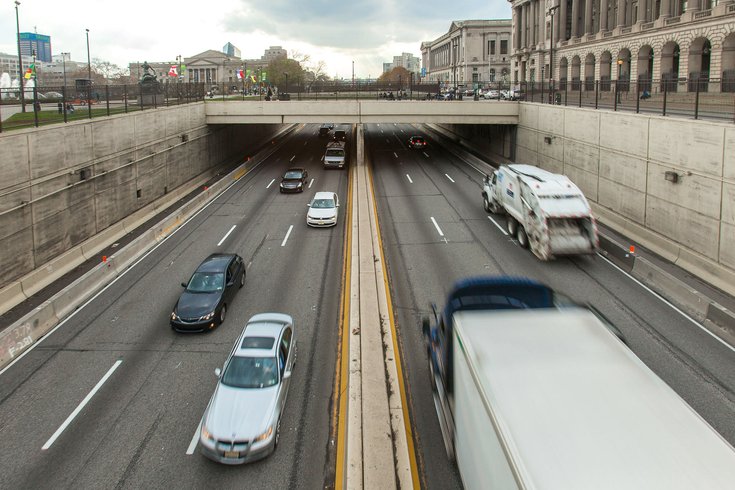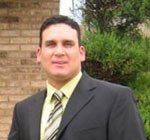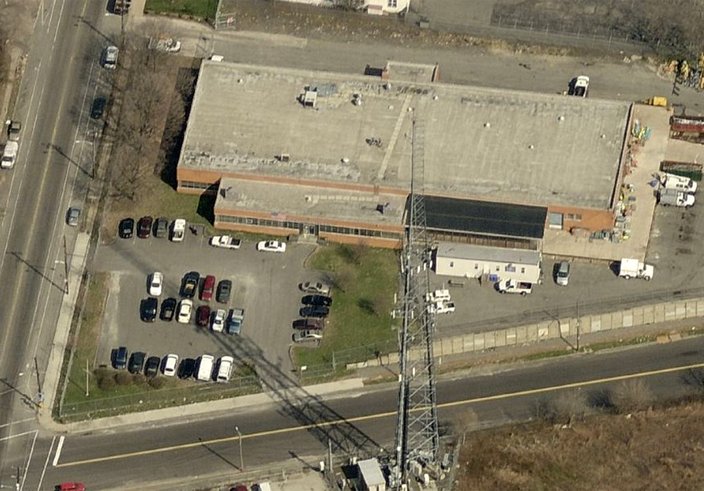I am as excited as anybody about the pope picking Philadelphia for his first visit to the United States.
I’m thrilled that as many as two million people will be coming to see our city, lots of them for the very first time. Not only that, it’s all happening in the last week of September, which is one of our best months. I’m pretty sure we’ll look great.
“We’re going from having no center at all to trying to get a center built, and then getting that center ready for the papal visit, all in the space of a couple of months.” – Richard Montanez, chief engineer in charge of the traffic center project
But I have to admit I’m also a little worried. Pope Francis' visit will be an incredible challenge, even for a city that’s used to hosting world-class events. We stand to gain a lot if we show the world we can stage something this big, and stage it well.
But what if it goes really wrong?
Those of us who live here don’t have to be told what a logistical nightmare it’s going to be. Traffic is already bad in Center City, even on a good day. Streets now closed for big construction projects are definitely making things worse. With the kind of security required for this event, who knows how many more roads around the Benjamin Franklin Parkway, the location of two papal events, will be off limits? Buses will have to change their routes, adding confusion to all the congestion. I’m betting there’ll be miles and miles of pedestrian barriers to boot. And you know it’s bad when so many roads are blocked they have to close the public schools.
All we need is one big water main break and this entire city could turn into a parking lot.
Not great news for people who live in a city that already ranks among the worst in the nation for driving. A recent Allstate Insurance report asserts that Philly drivers are 61 percent more likely to crash than the average driver. Of the nation’s 200 most populous cities for safe driving, it puts us all the way down at No. 192 on the list.
Every other major U.S. city has an interactive traffic operations center to handle these kinds of events. It’s essentially a room full of video monitors and computer terminals that allow controllers to see traffic problems in real time, and respond immediately by switching signals remotely, or send police to the scene.
So far, not us.
![]()
Los Angeles opened its traffic control center in early 2013. With the flick of a switch, the city became a worldwide leader by synchronizing all of its nearly 4,400 stoplights. Philadelphia is scrambling to open its own traffic operations center before the September 2015 visit by Pope Francis. (Reed Saxon, File / AP)
TRAFFIC CENTER: CONSTRUCTION AHEAD
It is comforting to know that we’ve got one in the works. Four years ago, Mayor Nutter’s Office of Transportation and Utilities decided to drag us into the 21st Century and build one. It’s also reassuring to hear Andrew Stober, chief of staff for the office, say it will definitely by up and running in time for the pope. It’s great that after four years of planning, we’ll have it ready just when we need it most.
But it’s going to be nail-bitingly close.
We’re five months and a week away, and construction hasn’t even begun on the Streets Department’s traffic signal and sign shop in Juniata Park that’s being retrofitted for all those new computers. There’s still $2.2 million worth of equipment to buy, install, and get up and running. And with 1,000 SEPTA cameras, 450 city police cameras and 400 PennDOT cameras all sending information back to the four people who will be manning those computers, there’s going to be a lot of kinks to work out.
No wonder Richard Montanez, left, traffic and street lighting chief engineer in charge of the project, sounds nervous.
“We’re going from having no center at all to trying to get a center built, and then getting that center ready for the papal visit, all in the space of a couple of months,” Montanez told me. “We just brought the contractors in for bids. And we’re still in the process of getting building permits.”
And while the center would definitely help, there’s still ongoing construction downtown, and it’s not going away. Montanez says the work on the Parkway, which the city is doing, will either be finished or patched up in time for the crowds. But not so for the two big buildings going up right in the center of the action, the Mormon Temple and the Comcast Tower.
“They won’t be done in time, so we’re asking them to make sure everything is secure within their site and lock it up tight,” he said.
The Philadelphia Traffic Operations Center will be located at the existing Streets Department Building at G Street and Ramona Avenue in Juniata Park. (Source: Bing Maps)
LESSON LEARNED, SEPTA SAYS
Luckily, our city is blessed with a great regional system of public transit.
Now, judging from what happened the last time we had overwhelming crowds in Center City, that too could be cause for concern. It was an embarrassing show of service for the Phillies' 2008 World Series Parade, and the system was completely overwhelmed. Service was delayed for hours, and frustrated riders had to stand on the platform and watch while inbound trains, overloaded with passengers, sped by their station. Southbound service on the Broad Street subway was so bad, with people pushing their way onto the platform, that rail officials were afraid someone would be forced onto the tracks and shut the line down altogether.
This time, though, SEPTA seems ready. The agency says it’s learned from past lessons. The agency is planning to shut down some stations so that the stations that remain open can have more frequent service. They’re also going to produce a special transit pass that will be good for the week.
“You have to understand that we carry 1.2 million people, just on a regular day,” said Jerri Williams, director of media relations for the agency. “At rush hour, we’re pretty much using all of our fleet.”
Of course, for people who live in and around Center City, there’s always walking. As often happens, it may well turn out to be the best option. Center City is just a few square miles and easily managed on foot.
But most of our streets and sidewalks, while charming, are narrow – especially in the neighborhoods that surround the Parkway. They are going to get pretty crowded. What are we going to do – ask everyone who lives in Center City to park their cars in New Jersey for the week?
And what about all the people who live here, and want to see the pope, but aren’t up to walking long distances? Older people, for instance? Children? Or people with disabilities?
I suggested setting up free shuttle buses that run a consistent loop around Center City, so people could always catch one, and hop on and off wherever. Something like the Phlash, only not just for tourists. Montanez was coy on that idea.
“I can tell you that it’s one of the things we are thinking about,” he said. “But I can neither confirm nor deny.”

 Thom Carroll/PhillyVoice
Thom Carroll/PhillyVoice

